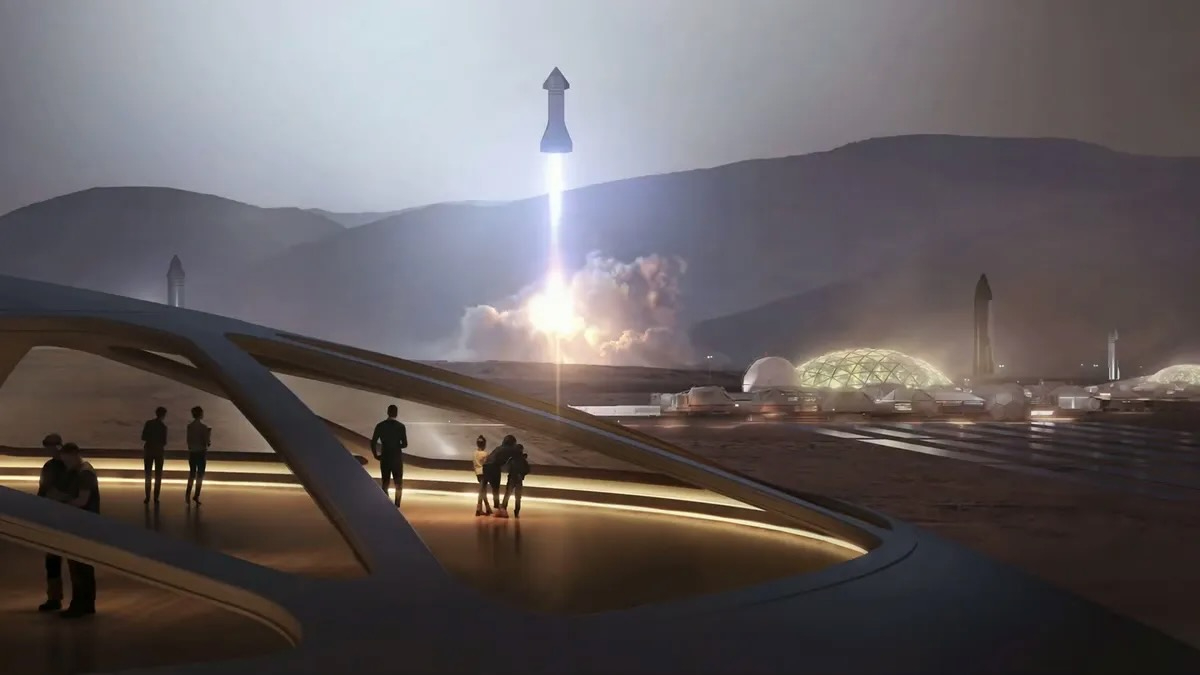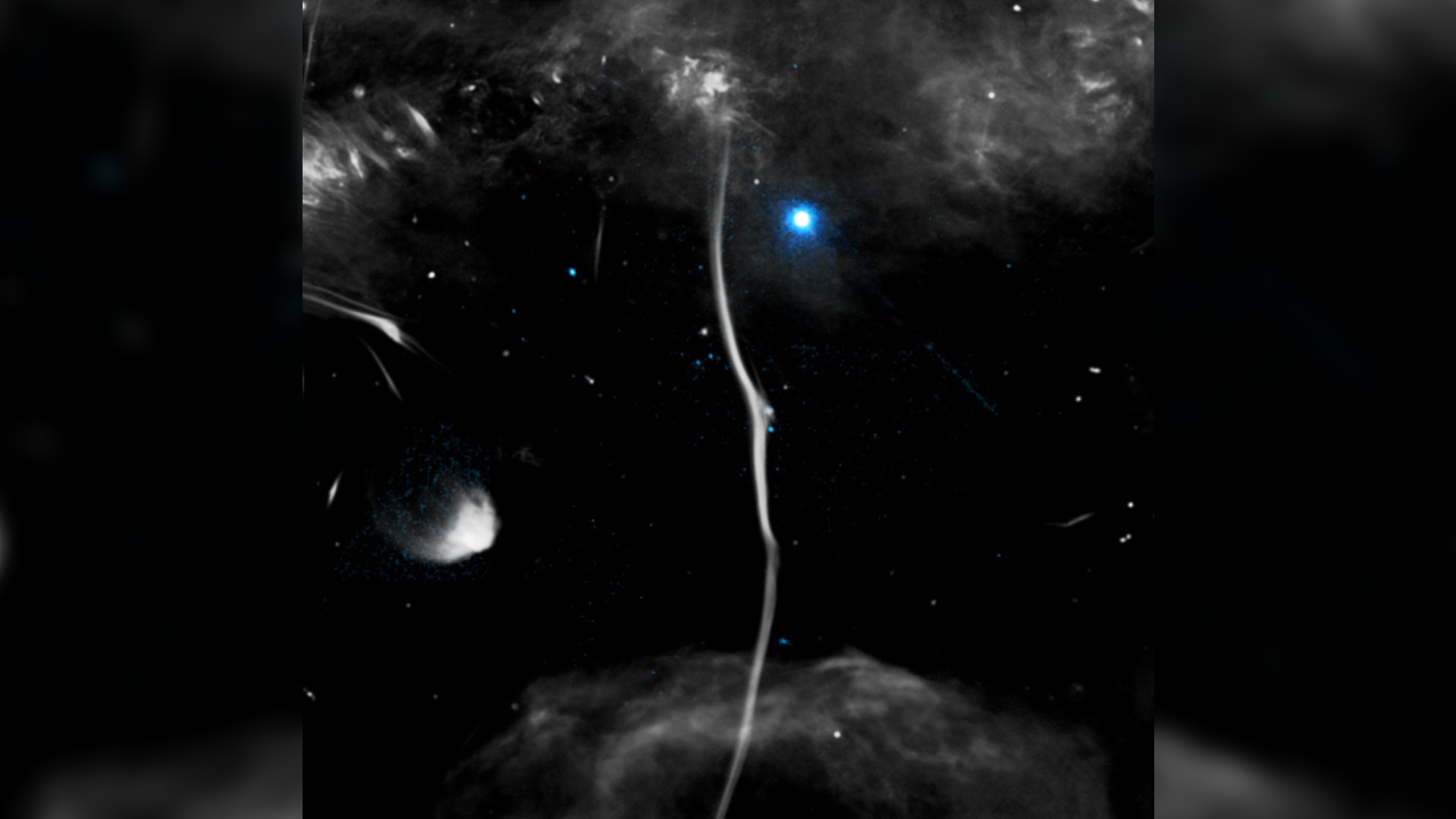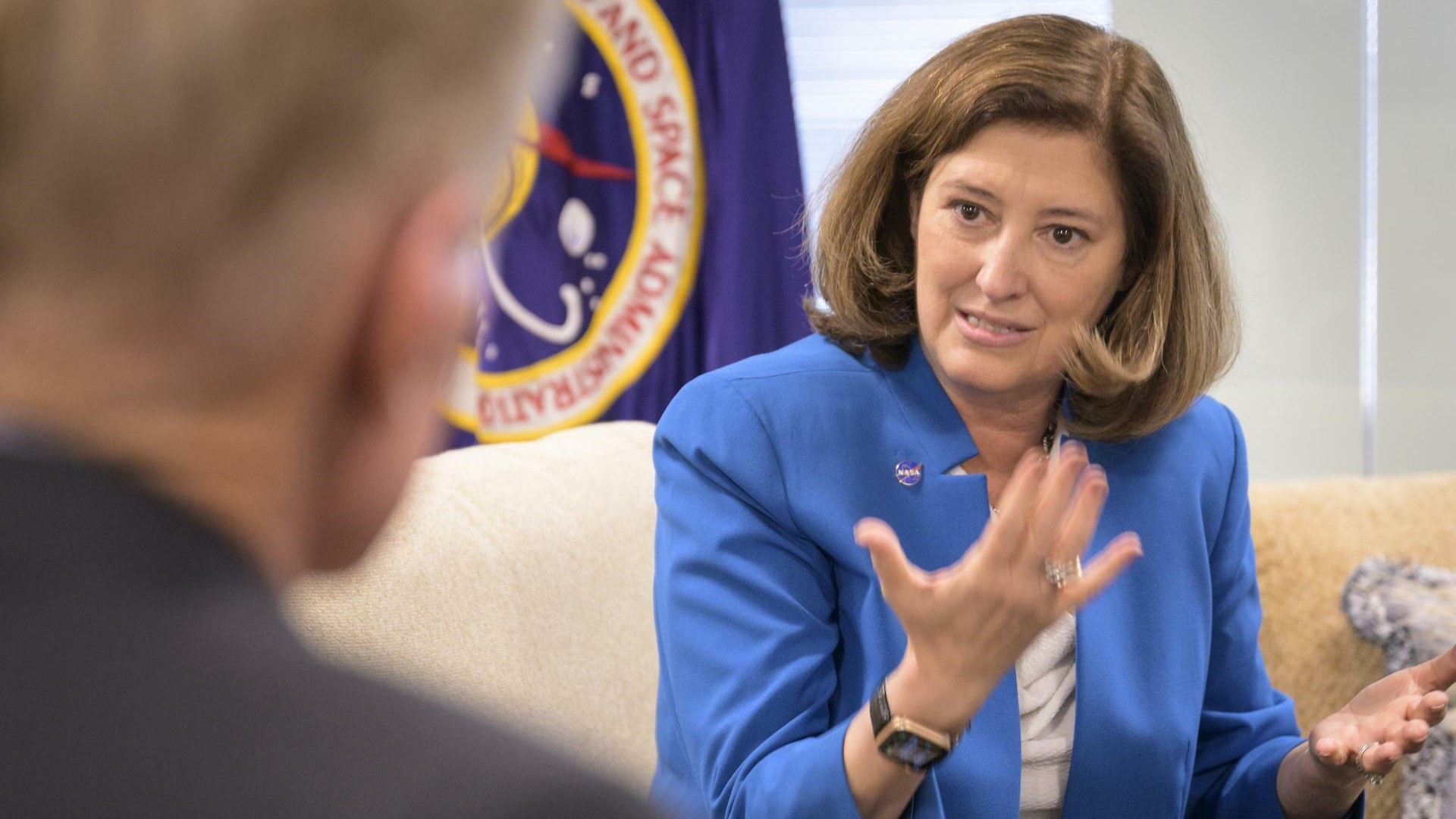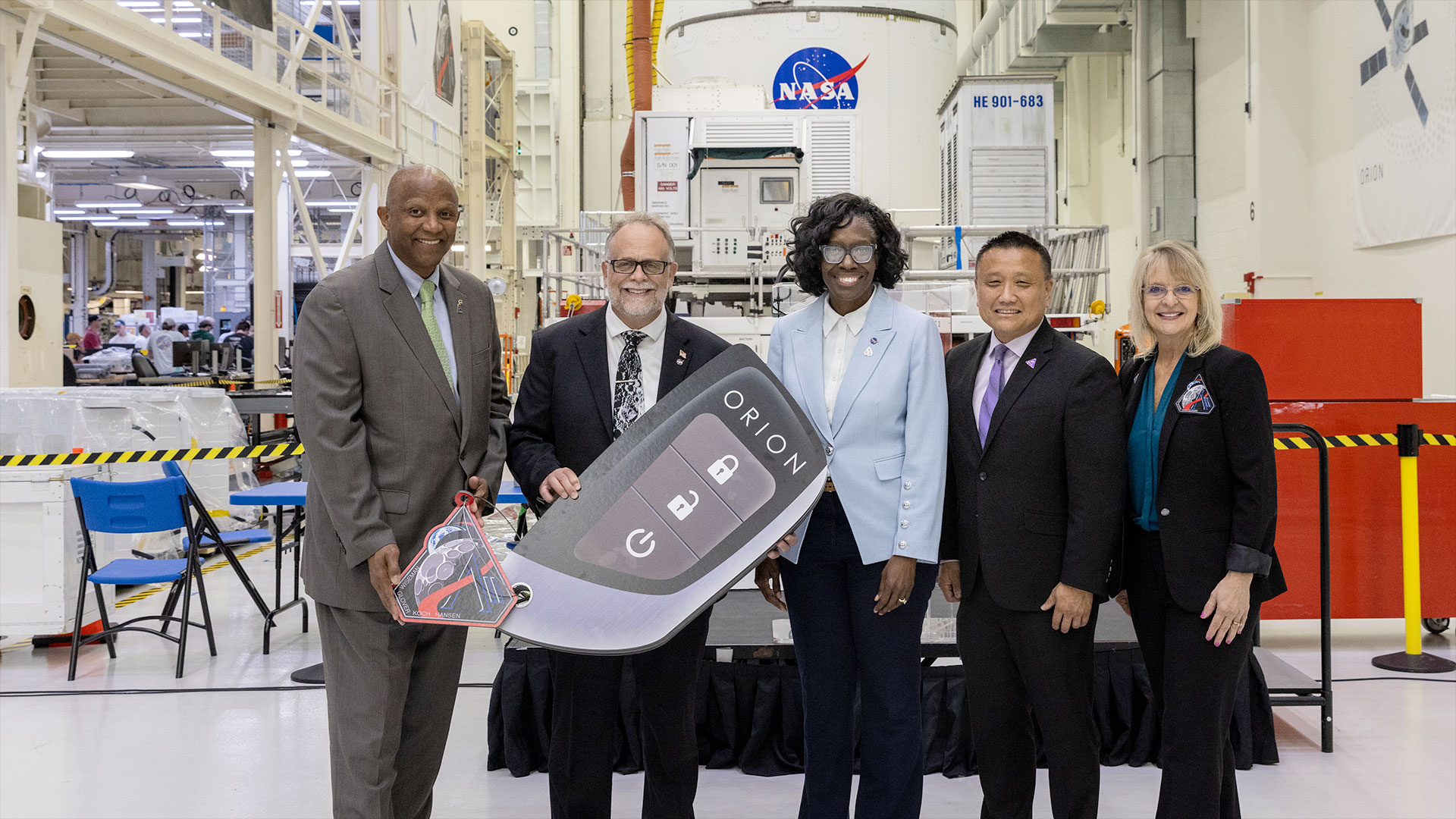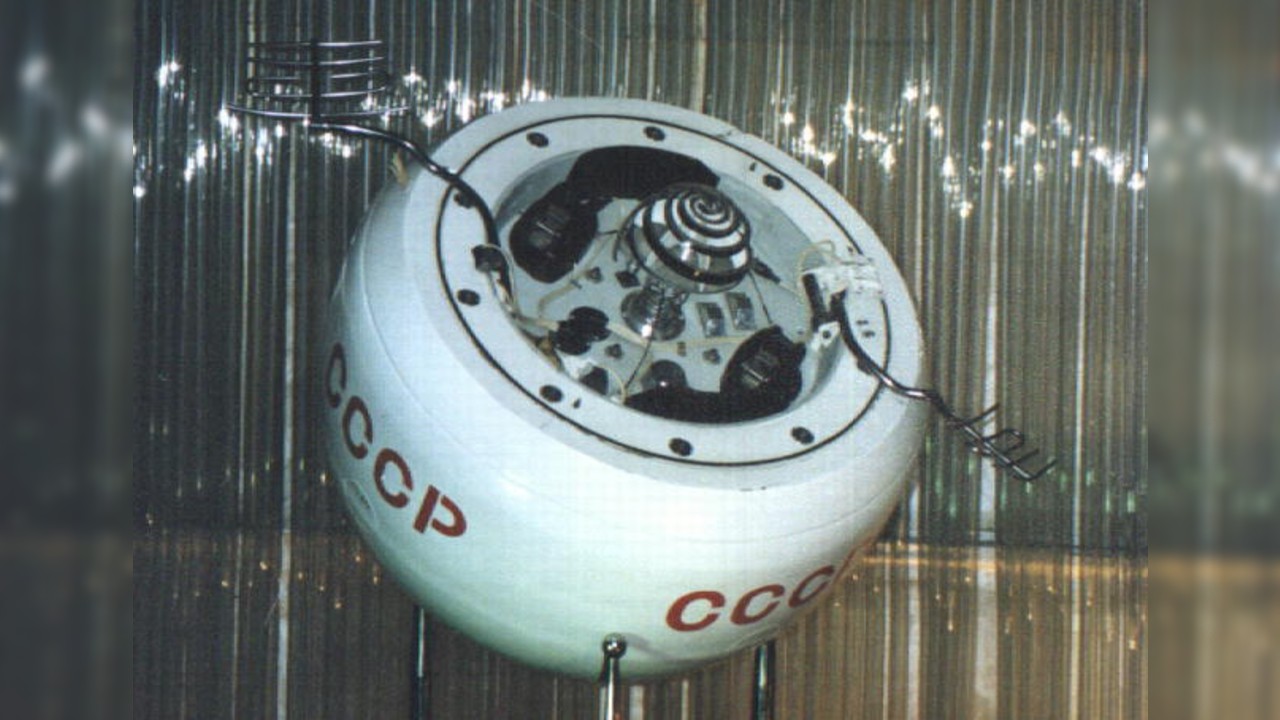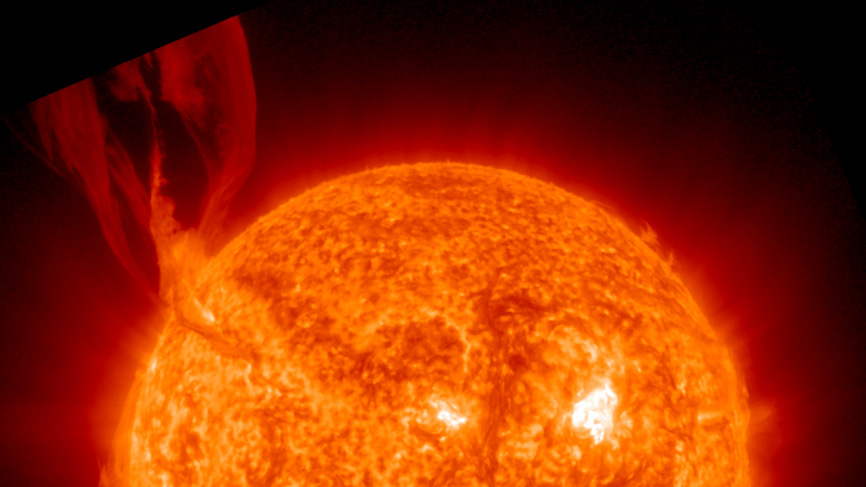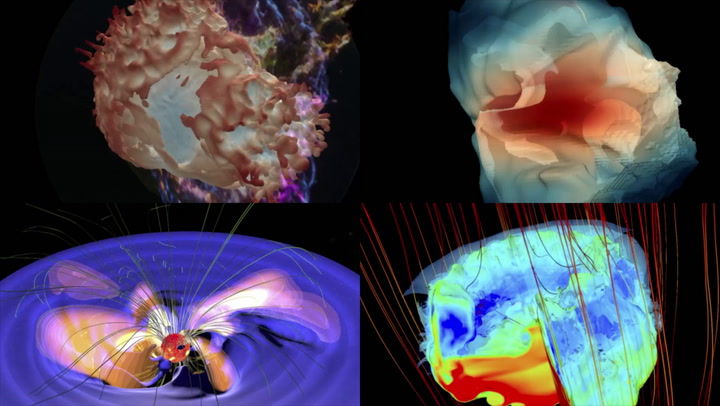Space History Photo: Applications Technology Satellite Testing
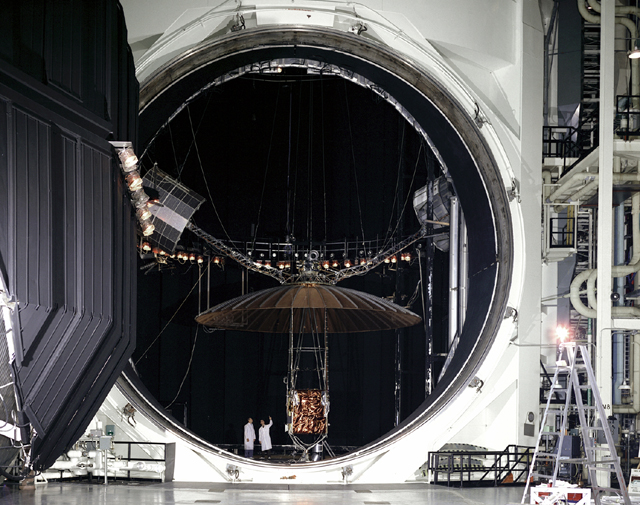
In this historical photo from the U.S. space agency, a test model of the Applications Technology Satellite (ATS) is seen on Sept, 30, 1973, during checkout activity in Chamber A of the Space Environment Simulation Laboratory at the Johnson Space Center (JSC) to see if the satellite's 30-feet diameter umbrella-shaped antenna would unfold properly in a space vacuum. The antenna is in an unfolded (deployed) position in this picture.
For the test, the 65-feet diameter by 120 feet high vacuum chamber in Building 32 was pumped down to an equivalent altitude of 255,000 feet. The test model satellite is hung by cables from the chamber's dome. Engineers from the Goddard Space Flight Center (GSFC) not only wanted to test the antenna mechanism itself, but the efforts of the unfolding action on the whole satellite. For the test, the 54-feet span solar array "paddles" for generating the satellite's electrical power were spread in the orbit flight position, while the parabolic antenna was folded into a donut-shaped package beneath the solar ray booms.
The 3,000 pound ATS-F was launched in the spring of 1974 atop a Titan IIIC launch vehicle into a 22,000-mile high synchronous orbit, first above the United States and later above India. ATS spacecraft prime contractor to the GSFC, Greenbelt, Maryland, was Fairchild Industries, Germantown, Maryland. This view is from outside the chamber looking through the huge doorway.
Each weekday, SPACE.com looks back at the history of spaceflight through photos (archive).
Get the Space.com Newsletter
Breaking space news, the latest updates on rocket launches, skywatching events and more!
Join our Space Forums to keep talking space on the latest missions, night sky and more! And if you have a news tip, correction or comment, let us know at: community@space.com.

The National Aeronautics and Space Administration (NASA) is the U.S. government agency in charge of the civilian space program as well as aeronautics and aerospace research. Founded in 1958, NASA is a civilian space agency aimed at exploring the universe with space telescopes, satellites, robotic spacecraft, astronauts and more. The space agency has 10 major centers based across the U.S. and launches robotic and crewed missions from the Kennedy Space Center in Cape Canaveral Florida. It's astronaut corps is based at the Johnson Space Center in Houston. To follow NASA's latest mission, follow the space agency on Twitter or any other social channel, of visit: nasa.gov.
